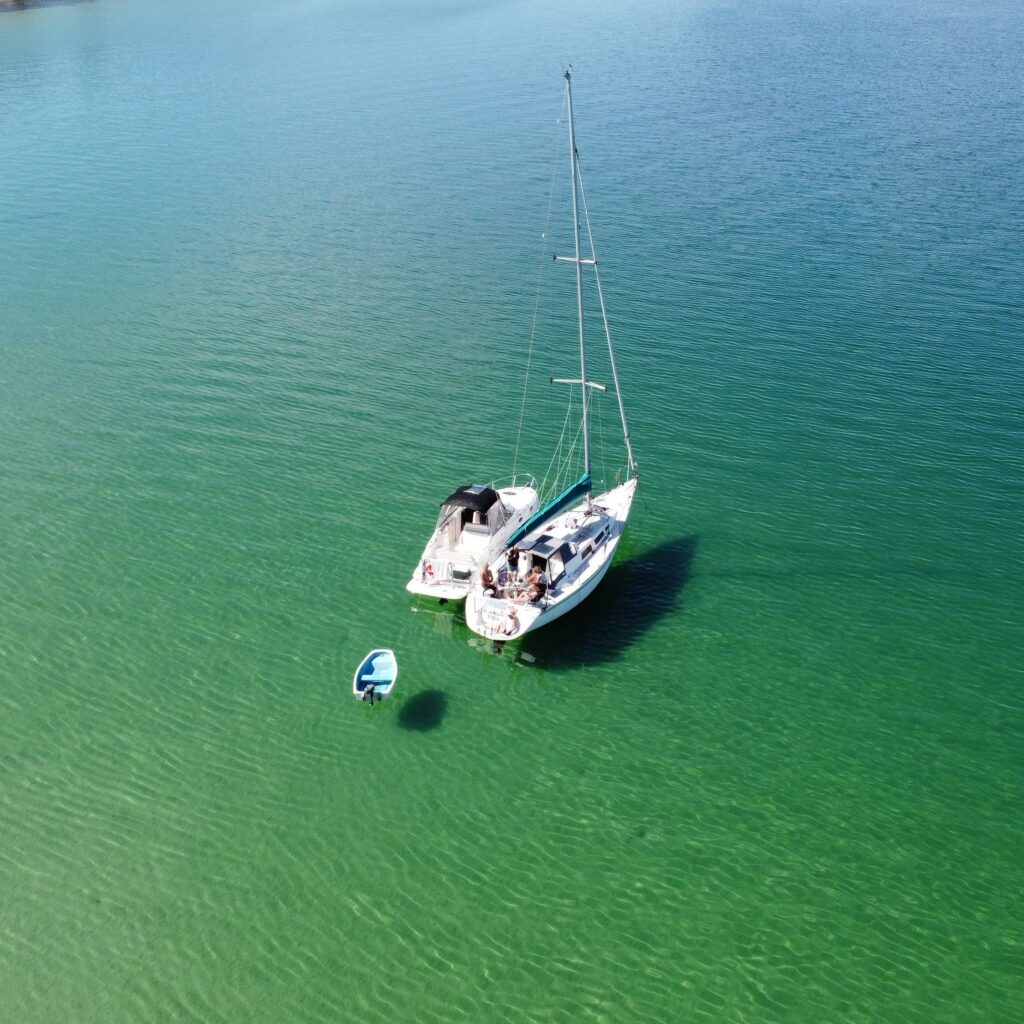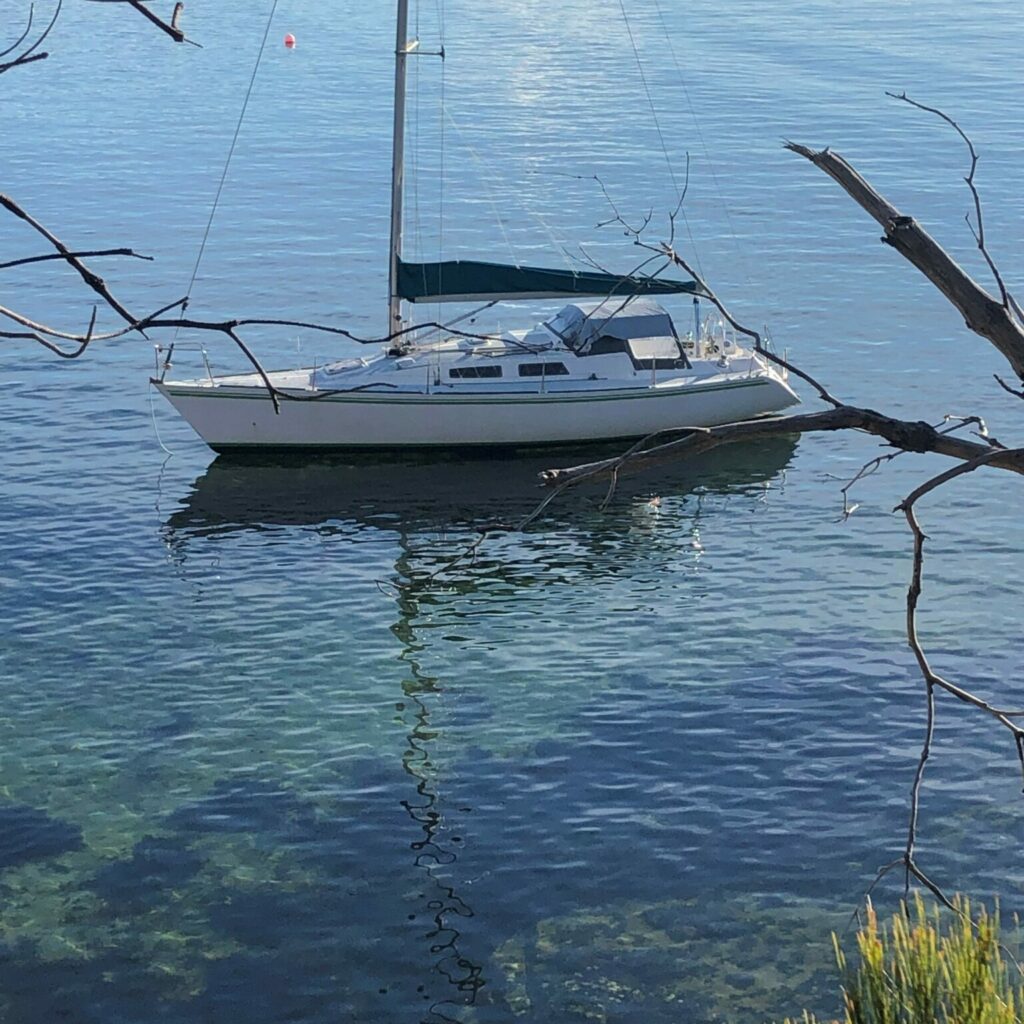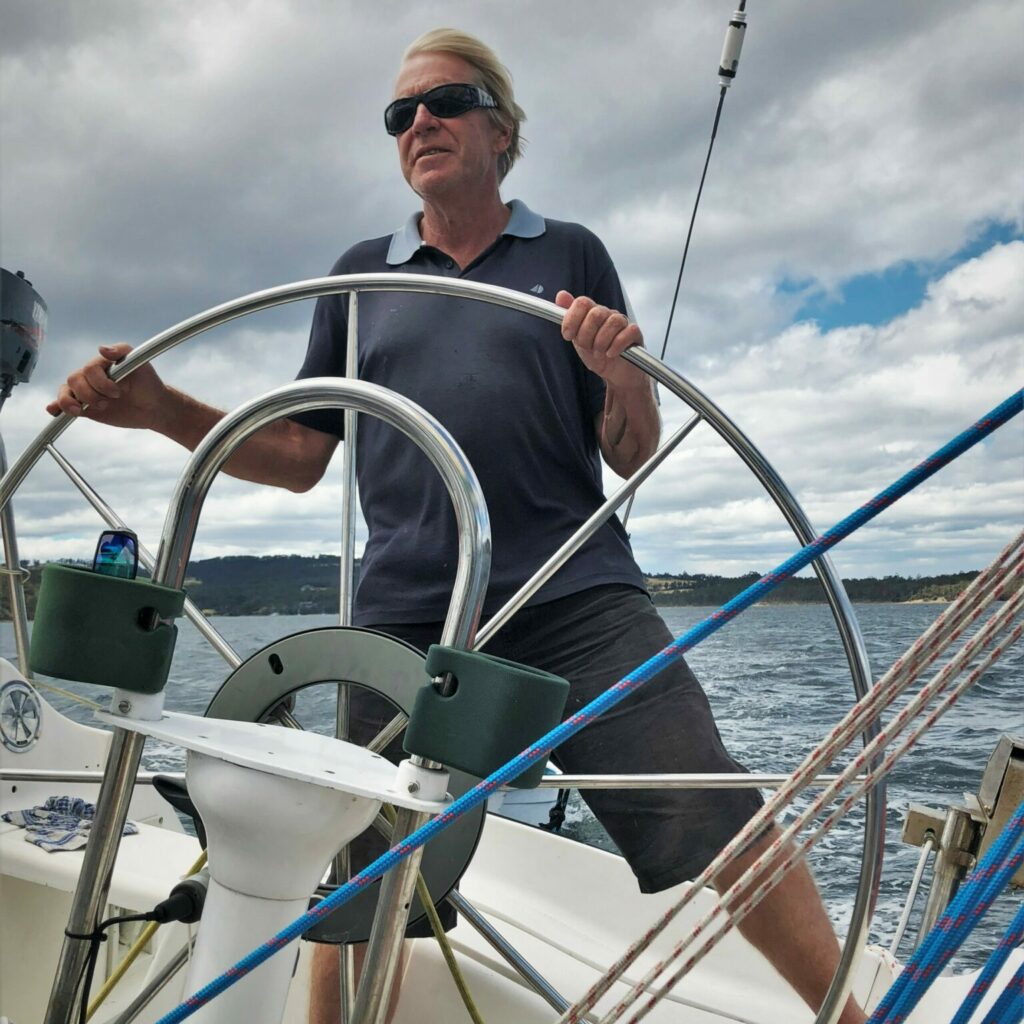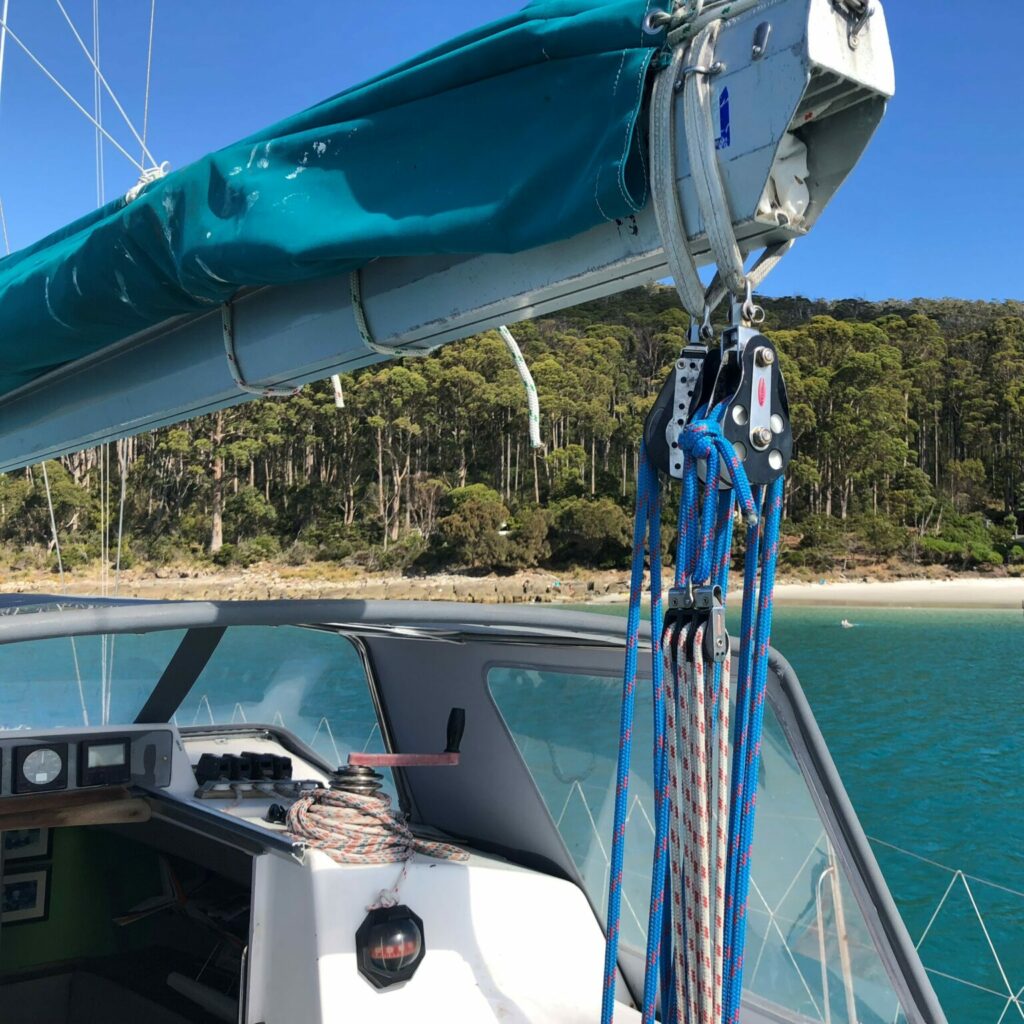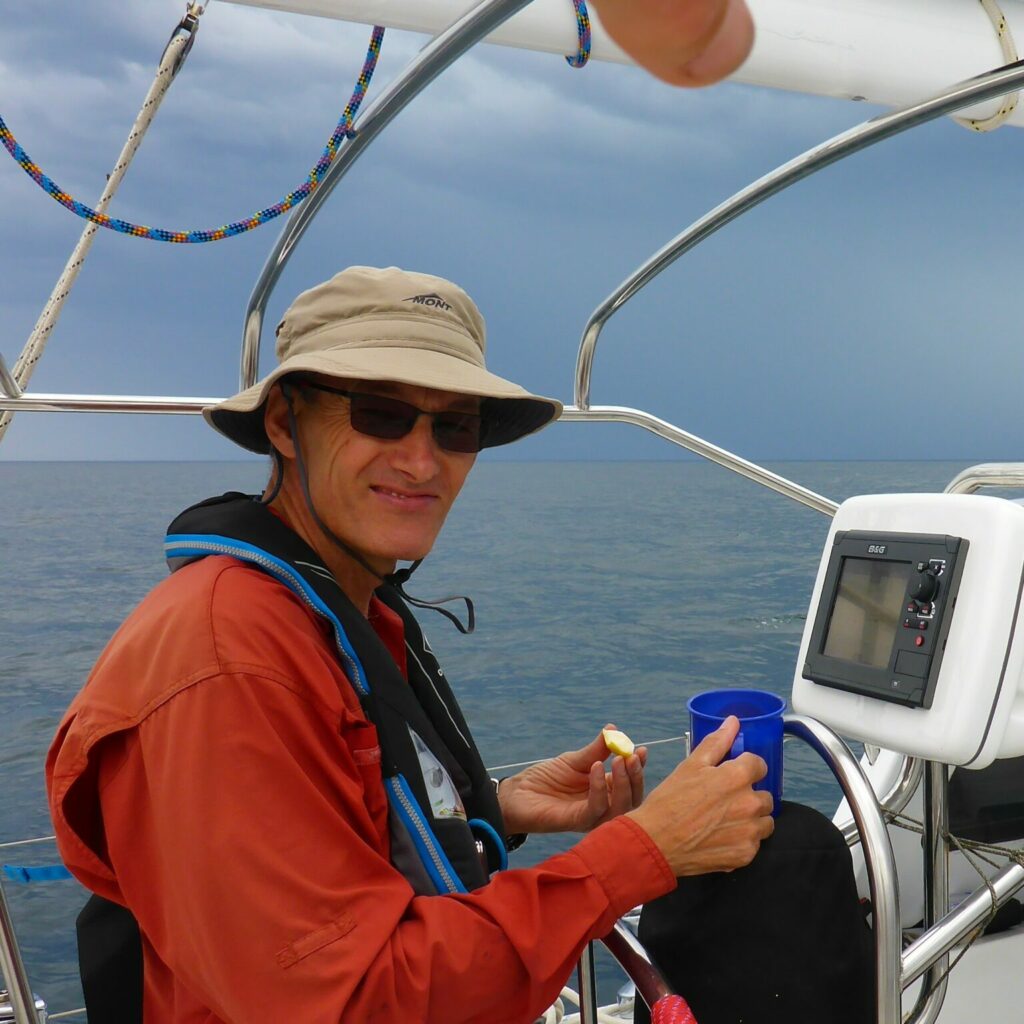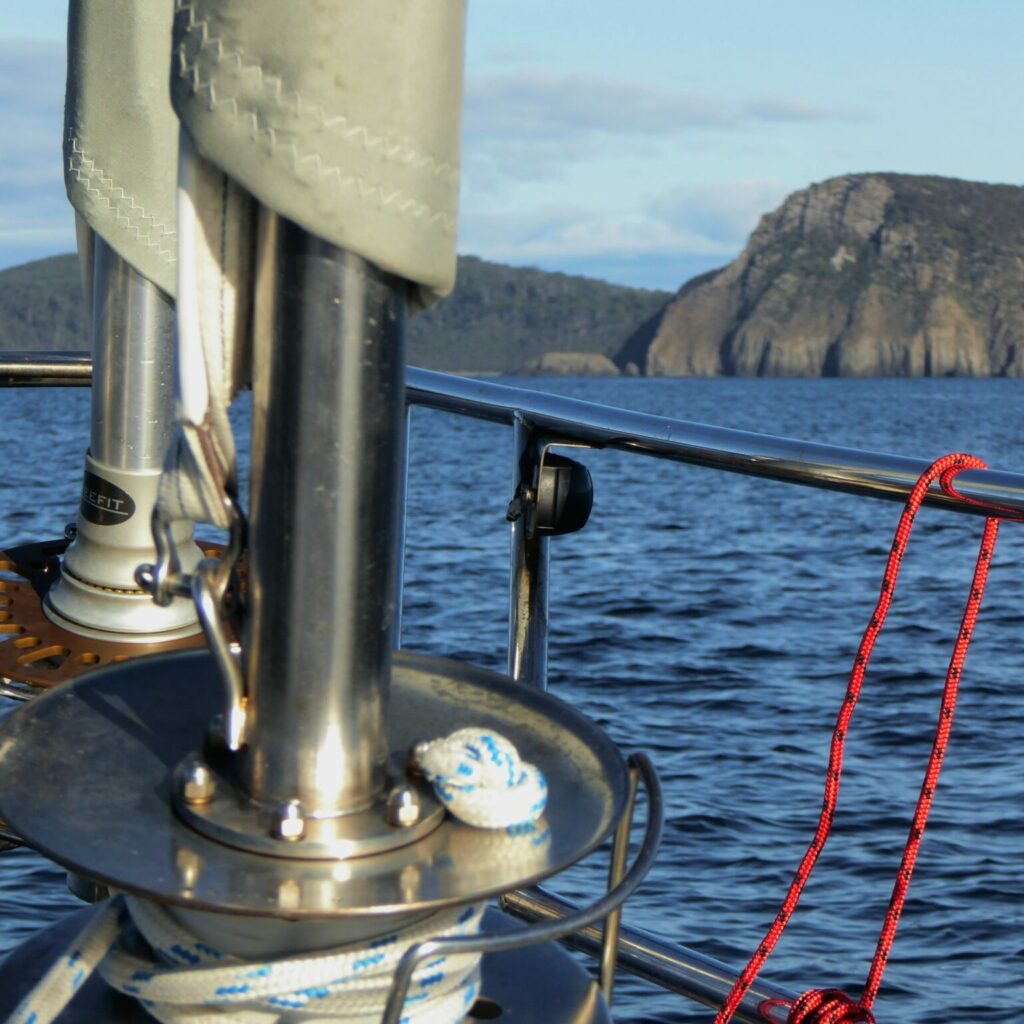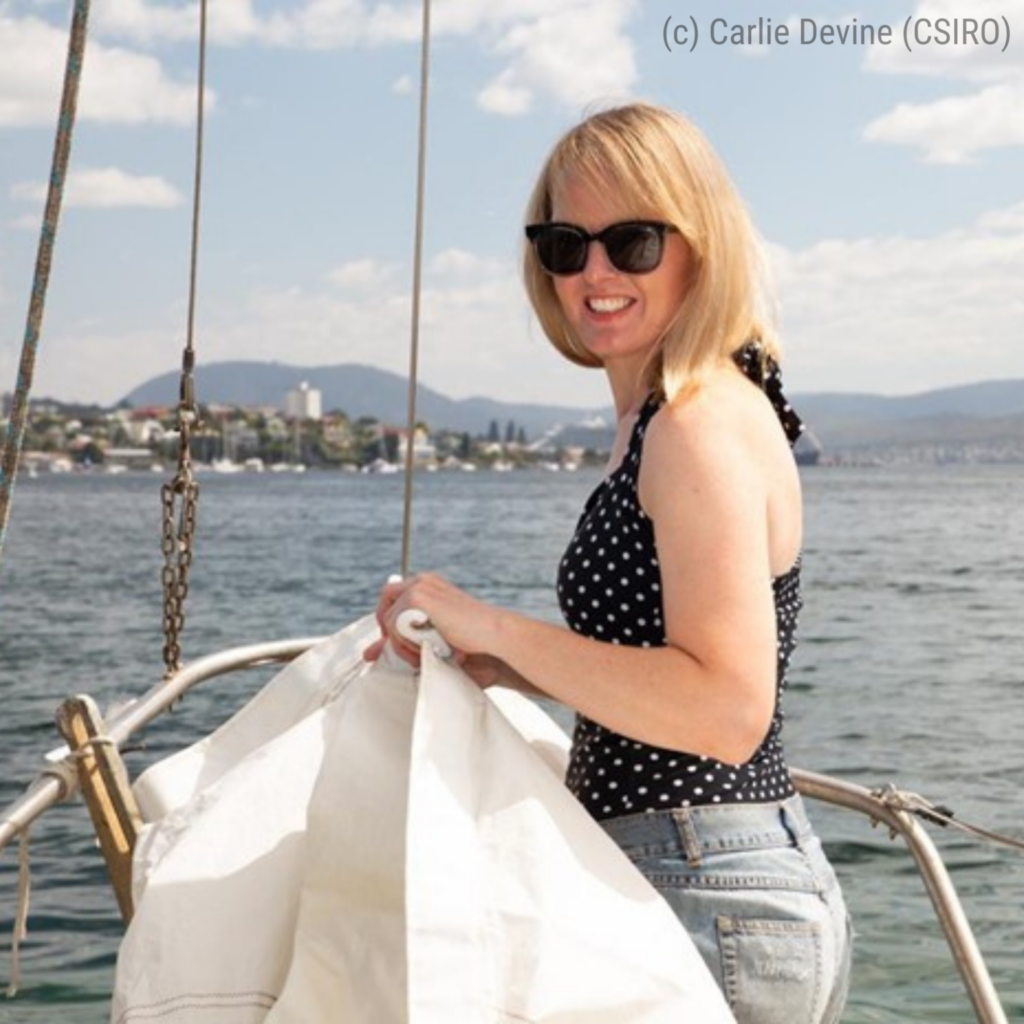Twelve mooring leaseholders in the Channel region of North West Bay have put up their hands to swap their chain moorings over to CSIRO-engineered environmentally-friendly moorings (EFMs). These moorings provide a safe and reliable alternative to help protect sensitive habitats – such as those that can be found in the seagrass meadows of North West Bay. Traditional moorings cause scraping along the seabed and damage seagrass, displacing the many species that rely on this habitat to survive.
NRM South is leading this pilot study of EFMs as part of a partnership project with CSIRO and OzFish Unlimited. Perhaps the most important project partners, however, are the mooring leaseholders. NRM South Senior Project Officer, Grace Isdale, spoke with some of the volunteers about their motivations for signing on and what they hoped to see come out of this fisheries habitat restoration project.
For some, it was directly observing the damage being done to the seagrass that motivated them to try an alternative, and all the participants that Grace spoke with were concerned about protecting the marine environment.
Anthony Mountain, one of the project’s volunteers and also a pilot, first noticed how much damage was being caused during a flight out to Dunalley. ‘I used to fly around there and have a look,’ said Anthony. ‘And I noticed these rings around boat moorings, quite significant rings [devoid of seagrass]. Particularly in Dunalley, as the water’s very shallow there. It was just a mental note.’
Anthony Mountain
Chris Heath, who has had a CSIRO-engineered EFM since 2018, was motivated by the damage he’s seen – both personally and in photos – of sites around Australia and abroad. ‘In bays where lots of boat owners moor their boats, the scouring … of the seabed is really evident; particularly if you see it from the air over some clear water. So I was mindful of the damage that it’s been doing, and I was keen to look at an alternative that would allow the marine life to grow back in that patch, and minimise the destruction.’
Narissa Bax, who felt making the switch was a unique opportunity to combine boat ownership with a meaningful conservation-focused initiative, was thrilled to learn that critically endangered handfish – that rely on seagrass habitat – had been observed near her moored boat. ‘I hope to see a broader uptake of EFMs to minimise impacts on the seafloor and as a more economical use of space in the marine environment,’ said Narissa.
Chris Heath and Narissa Bax
Rob Bester hopes that the uptake of EFMs will not only become more common but will one day be compulsory. ‘I’m assuming that ultimately these improved moorings will turn out to be a good thing and [will] eventually be compulsory. I’m always conscious of moorings dragging around and while having my mooring looked after is really exciting, it’s [about] having better systems for looking after our planet.’
Not only are these volunteers doing their bit to help protect their local environment, but they are also helping to spread the word, with all volunteers confirming they had spoken about the initiative with other people. Chris Heath is one of the project’s most enthusiastic proponents, who also believes this type of mooring will one day become mandatory, ‘I mention it to anybody that has a boat. I’ve generally spoken highly of it, and it’s been very good in terms of letting the sea floor recover under my boat.’
Ultimately, all volunteers see this technology as a way forward and hope to see improvements to their local environment as a result of the project and a broader uptake of EFM use amongst their local boating community. Pat Fazackerley, an aquarium owner with a keen interest in marine life wants to keep the area in as pristine condition as possible. ‘I think our bay [is important], because there’s not huge amounts of area elsewhere in the Channel with a lot of seagrass, and that’s where the little fish get in and breed. There are quite a few fish here and I want to keep it as pristine as possible. I don’t think the chain moving around all the time does the sea floor any good.’
This project, set to run until June 2023, is supported by NRM South through funding from the Australian Government.
